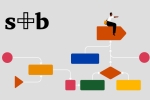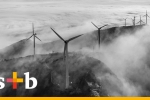Global Telecom and Entertainment & Media Outlook 2024–2028: Methodology and definitions
Go to methodology and definitions
Entertainment and media Outlook methodology
Segments
Thirteen entertainment and media segments are covered within the Global Entertainment and Media Outlook with 11 revenue segments, one data segment, and three trackers. The categories for 2024 are as follows:
- Business-to-business
- Cinema
- Connectivity service
- Internet advertising
- Music, radio and podcasts
- Newspapers, consumer magazines and books
- Out-of-home (OOH)
- Over-the-top (OTT) video
- Traditional TV
- Video games and esports
- VR and AR
The data segment is Data consumption, and the three trackers are AI, Metaverse and NFT.
Territories
A total of 53 territories, spread across North America, Western Europe, Central Europe, Middle East & Africa, Latin America and Asia Pacific, are represented within the Outlook. The ‘Rest of MENA’ grouping is treated as a territory and comprises Algeria, Bahrain, Jordan, Kuwait, Lebanon, Morocco, Oman and Qatar.
These 53 territories account for around 80% of the global population, and the sum of all territories generates the ‘Total’ estimate.
Historic data collection
All the forecasts have been built by starting with the collection of historical data from a variety of sources. A baseline of accurate and comprehensive historic data is collected in the first instance from publicly available information including from trade associations and government agencies. When this data is used directly, these sources are cited accordingly. In addition to this, interviews with relevant associations, regulators and leading players have been conducted to gather insights and estimates not available in the public domain. When this information is collected, it is used as part of the calculations and the sources are proprietary.
Forecasting methods
All forecasts are prepared as part of a collaborative, integrated process involving both quantitative and qualitative analysis. The forecasts are the result of a rigorous process of scoping, market mapping, data collection, statistical modelling and validation.
Use and permissions
Use of data in this publication
Material in this publication is drawn from data in the Global Entertainment & Media Outlook 2024–2028, a comprehensive source of consumer and advertising spend data available via subscription. PwC continually seeks to update the online Outlook data; therefore, please note that data on this page may not be aligned with the data found in the Outlook tool. The Global Entertainment & Media Outlook 2024–2028 is the most up-to-date source of consumer and advertising spending data. This document is provided by PwC for general guidance only and does not constitute the provision of legal advice, accounting services, investment advice or professional consulting of any kind.
The information provided herein should not be used as a substitute for consultation with professional tax, accounting, legal or other competent advisers. Before making any decision or taking any action, you should consult a professional advisor who has been provided with all pertinent facts relevant to your particular situation. The information is provided as is, with no assurance or guarantee of completeness, accuracy or timeliness of the information and without warranty of any kind, express or implied, including but not limited to warranties of performance, merchantability and fitness for a particular purpose.
Outlook content must not be excerpted, used or presented in any portion that would render it misleading in any manner or that fails to provide sufficient context.
Permission to cite
No part of this publication may be excerpted, reproduced, stored in a retrieval system, or distributed or transmitted in any form or by any means—including electronic, mechanical, photocopying, recording or scanning—without the prior written permission of PwC.
Requests should outline the excerpts you wish to use and be submitted in writing to Kamlesh BalasubramanianOpens in a new window, along with a draft copy of the full report in which the excerpts will appear.
Provision of this information is necessary for every citation request to enable PwC to assess the context in which the excerpts are being presented. Without limiting the foregoing, excerpts from the publication may be used only for background market illustration, should not be the sole source of 2024–2028 information, and must not form the majority of sourced information. Please cite the Outlook as follows: ‘PwC Global Entertainment & Media Outlook 2024–2028, www.pwc.com/outlook’ in your article.
Contributors
- Febri Aditya
- Manpreet Singh Ahuja
- Kamlesh Balasubramanian
- Werner Ballhaus
- Christina J. Bangah
- Rajib Basu
- Stef Bayley
- Daniel J. Bunyan
- Wilson W.Y. Chow
- Jeremy Dalton
- Daniel Gross
- Yusuke Harada
- Roberto G. Hernandez
- Ran R. Huo
- Elizabeth Johnson
- Louise King
- Felienda Kurniawan
- Cecilia Lau
- Brianna Meister
- Yuji Mori
- Constantine Okoye
- Romina Perchthaler
- Emmanuelle S. Rivet
- Karim Sarkis
- Rajesh Sethi
- Triono Soedirdjo
- Bart Spiegel
- Charles Stuart
- Subianto Subianto
- Tsutomu Suto
- Cecilia Yau
Many other professionals from the PwC entertainment and media practice, across the network, reviewed and added local expertise to this publication.
Telecom Outlook methodology and definitions
Historical data collection
All the forecasts have been built by starting with the collection of historical data from a variety of sources. A baseline of accurate and comprehensive historic data is collected in the first instance from publicly available information including from trade associations and government agencies. When this data is used directly, these sources are cited accordingly. In addition to this, interviews with relevant associations, regulators and leading players have been conducted to gather insights and estimates not available in the public domain. When this information is collected, it is used as part of the calculations and the sources are proprietary.
Forecasting methods
All forecasts are prepared as part of a collaborative, integrated process involving both quantitative and qualitative analysis. The forecasts are the result of a rigorous process of scoping, market mapping, data collection, statistical modelling and validation. All data, charts and graphs, unless stated otherwise, in this publication are taken from the Global Telcom Outlook 2023–2027.
Definitions
The Global Telecom Outlook is a new product this year. It contains the existing internet access and data consumption metrics, as well as new coverage areas examining different aspects of the telco ecosystem.
Five telco segments across 53 territories are covered in the Outlook with a range of revenue and non-revenue sub-categories. The segment categories for 2023 are as follows:
- Internet access mobile and fixed
- Data consumption
- Capex
- IOT
- Spectrum owners
A total of 53 countries are represented in the Global Telecom Outlook, spread across North America, Western Europe, Central Europe, the Middle East and Africa, Latin America and Asia Pacific. The Rest of MENA grouping is treated as a country and comprises Algeria, Bahrain, Jordan, Kuwait, Lebanon, Morocco, Oman and Qatar. These territories account for around 80% of the global population and the sum of all territories generates the “Total” estimate.
Telco capex spend split by fixed broadband and mobile; fixed broadband and mobile ARPU split by personal and household income; and information on spectrum ownership are available for all 53 territories. Data on IOT device revenue, IOT device installed base and average selling price covers ten markets.
Use and permissions
Use of data in this publication
Material in this publication is drawn from data in the Global Telecom Outlook 2023–2027, available via subscription at www.pwc.com/outlook. PwC continually seeks to update the online Outlook data; therefore, please note that data in this publication may not be aligned with the data found online. This document is provided by PwC for general guidance only and does not constitute the provision of legal advice, accounting services, investment advice or professional consulting of any kind.
The information provided herein should not be used as a substitute for consultation with professional tax, accounting, legal or other competent advisers. Before making any decision or taking any action, you should consult a professional adviser who has been provided with all pertinent facts relevant to your particular situation. The information is provided as is, with no assurance or guarantee of completeness, accuracy or timeliness of the information and without warranty of any kind, express or implied, including but not limited to warranties of performance, merchantability and fitness for a particular purpose.
Outlook content must not be excerpted, used or presented in any portion that would render it misleading in any manner or that fails to provide sufficient context.
Permission to cite
No part of this publication may be excerpted, reproduced, stored in a retrieval system, or distributed or transmitted in any form or by any means—including electronic, mechanical, photocopying, recording or scanning—without the prior written permission of PwC.
Requests should be submitted in writing to Shruti Kumar at shruti.kumar@pwc.com outlining the excerpts you wish to use, along with a draft copy of the full report in which the excerpts will appear.
Provision of this information is necessary for every citation request to enable PwC to assess the context in which the excerpts are being presented. Without limiting the foregoing, excerpts from the publication may be used only for background market illustration, should not be the sole source of 2023–2027 information, and must not form the majority of sourced information. Please cite the Outlook as follows: ‘PwC Global Telecom Outlook 2023–2027, www.pwc.com/outlook’ in your article.
Contributors
- Manpreet Singh Ahuja
- Deepak Ayyagari
- Werner Ballhaus
- Chris Bartlett
- Stef Bayley
- Jeanette Calandra
- Wilson Chow
- Matthew Duffey
- Ali Ghaddar
- Kathleen Gillen
- Florian Groene
- Daniel Gross
- Udayan Gupt
- Jad Hajj
- Ho-Sung Han
- Elmo Hildebrand
- Hidetaka Jimba
- Ki-Wook Jung
- Jihane Kfoury
- Robert Kramer
- Shruti Kumar
- Ankit Kushwaha
- Ramzi Madi
- Franziska Meyer
- Isao Miyama
- Constantine Okoye
- Junis Rindermann
- Sorabh Saxena
- Navar Shad
- Tiger Shan
- John Simcoe
- Dora Song
- Russell Taylor
- Philippe Trouchaud
- Matthew Tutty
Many other professionals from the PwC telecommunications practice, across the network, reviewed and added local expertise to this publication.
About PwC
At PwC, our purpose is to build trust in society and solve important problems. We’re a network of firms in 152 countries with over 327,000 people who are committed to delivering quality in assurance, advisory and tax services. Find out more and tell us what matters to you by visiting us at www.pwc.com.
Supplier to the Outlook
Omdia, part of the Informa Tech group of businesses, is a provider of business intelligence and strategic services to the global telecom and media markets.
















